Barcelona has been up at the top of my wish list of places to visit as long as I can remember. As an art lover with a particular attraction to Art Nouveau, Modernism, Picasso, Dali and Gaudi and a leaning towards all things Mediterranean (food and weather wise) it’s a wonder I’ve never made it there before now. Somehow the trip had eluded me as other destinations took priority, often those involving visits to stay with family, or friends, or for work. Taking a trip just for ME was pretty much unheard of.
This trip was an extra special one; straight from the top of my bucket list to celebrate a very big birthday. It was totally indulgent and all about what I wanted to do, and what I wanted to do was explore the art and architecture of the Modernisme movement (or Catalonian modernism) and Catalonian cuisine.
I planned and researched meticulously putting together a detailed travel plan and a ‘must see’ list. I like to immerse myself in the detail, I’m a bit OCD like that, but I also like a bit of flexibility and am not averse to chopping and changing as I go along, which was just as well as I hadn’t anticipated the enormity of Barcelona. We easily navigated the metro system and our apartment was very central (many things such as La Boqueria,the Cathedral, MACBA, Palau Guell were no more than ten minutes walk away) but still we ended up with an unfinished list, while still managing to clock up a whopping 30k in three days (seriously! we should have got into training before we left, my calves hurt for ages). It dawned on me the very first day that Barcelona was going to be impossible to explore in the time we had.
WHAT I SAW
I managed to pack in most of the arty things I wanted to see and only a few fell by the wayside, but that just means I have to go back and finish what I started!

Park Guell
Park Guell – (Metro Green Line L3. Book tickets online to avoid the queues. Prices are 7 euros per person) Antoni Gaudi’s extravagant creation for the industrial tycoon Eusebi Guell was originally conceived as a modern housing development which began development in 1900. Sixty houses were planned, but only two were ever completed, one of which Gaudi, his father and niece eventually came to live in. The Park became city property in 1923 and was opened to the public in 1926. In 1984 it was made a World Heritage Site. We caught the Metro train to Vallcarca and then walked up the most hellish hill to the park. My advice; wear sensible shoes and take plenty of water to drink. I was thankful for my life in Wales which prepared me for the hills otherwise the trek there might have finished me off. The sculpture park itself is quite small, but there are about 3 kilometres of hilly paths that criss-cross and wind through the surrounding palm trees and gardens. The colour and architecture of the park reminded us a little of Portmeirion, except with sun and palm trees and a lot more mosaic. When you book you are alloted a time for entry and they are quite strict about adhering to it. We had to wait for about 15 minutes until the correct slot as we were a bit early but once inside we were able to stay as long as we wanted. Even in March the park was busy with tourists so I suspect in high season they may stick more rigidly to the 40 minute time limit we were supposed to have. We could have spent longer in there but headed out because we were hungry (no picnics allowed inside the sculpture area) and had booked to go into the Gaudi House museum.

Casa Gaudi
Gaudi House museum (Book tickets separately for the house, again online. 5.50 euros per person) was built as one of the showcase houses in the park and eventually lived in by Gaudi, his father and his niece. Despite Gaudi’s often outlandish and wildly imaginative architecture (Nigel, my partner, says he’s like a child with a doodle who doesn’t know when to stop, he just needs to keep adding one more thing, then another and another) he lived a very simple, pious life. Basic in his needs; he was religious, greatly influenced by the natural world, a vegetarian and remained single all his life. He lived in the house in Park Guell until in 1910 when he moved into his workshop on site at the Sagrada Familia to oversee work. In 1926 he died after being hit by a tram on his way to vespers.

Sagrada Familia
Sagrada Familia (Metro to Sagrada Familia on L5, blue line or get L2 purple line. Book tickets online, 15 euros per person)- A visit to Gaudi’s unfinished work, which won’t see completion until 2026, has to be on everyones list. As we climbed the steps from the metro station and turned around I literally stepped back open-mouthed. The Sagrada is quite breathtaking in its architectural complexity. It is a mish-mash of religious iconography, elements from nature and impossibly fragile looking towers. They don’t look as though they should stay upright. The building is covered with intricate mosaic, sculpted leaves, figures, birds, shells, lizards and other animals carved into stone and wood. When you step inside it’s as though you’ve entered another world altogether. Outside is dark, gothic and imposing, which leads you to summise that the inside would be similarly intense but it is quite the opposite. As you step through the door the light hits you. A kaleidoscope of colour shines through the various stained glass windows reflecting different colours onto each wall; while one side is warm with reds, yellows and orange, the other streams with blues and greens. The colour seems to be fluid, washing over the interior. I was a little awestruck.

MACBA – (Nearest metro stop is Universitat on L2 Purple line, but it was 10 minutes walk from our apartment. Book tickets online during high season. Costs 10 euro per person) If you love contemporary art you must pay this gallery a visit. We saved our trip for the one rainy day and the tail end of all that walking, when I literally couldn’t have walked more than ten minutes if I’d tried. The museum has an extensive permanent collection which we spent hours browsing and a temporary exhibition by Antoni Miralda, a Spanish artist who has made food his creative focus. The irony wasn’t lost on us especially when we saw Bread Line and our joint response was “all that wasted bread”!!

Bread Line by Antoni Miralda

Picasso Museum – While Gaudi was all about the large breathtaking structure, the flight of fancy and the ground breaking architectural design Picasso was quite unexpected. The museum certainly gave us our moneys worth, but since Picasso was one of the twentieth centuries most prolific artists that’s probably no surprise . The exhibited work spanned all of his notable periods; rose, blue, cubist, modernist, and stretched back to his early work as a fourteen year old which was a real eye opener. Like with Gaudi’s architecture, my partner felt that Picasso was another artist who was somewhat self-indulgent and got a bit carried away, what he didn’t expect was his skill as a classical painter. Even at fourteen he was prodigiously talented, showing great skill as a copyist, slowly honing his talent until he matured and went his own way. If you think you know Picasso, this will show you that there is so much more to him. Book online during high season but we bought tickets there. Fourteen euros per adult pays entry to the normal exhibition and the temporary exhibition (which this time was his portraits).
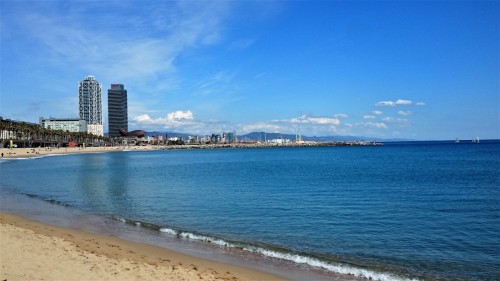
Barceloneta
Barceloneta – Friends had suggested that it was better to get out of the centre of Barcelona as the beach nearer to the city was dirty but I found the Barceloneta a lovely area. Fair enough the sand is quite harsh underfoot, great if you want to exfoliate the feet, but not as dirty as I’d expected. We took a stroll on our second morning while it was warm and sunny, past Columbus on his column and down to the sea where we sat, drank a morning coffee at a beach side cafe while watching the sand sculpture makers and then lazed on the beach eating our lunch before heading back towards the Picasso museum. The worst bits of the Barceloneta (and Barcelona as a whole) were the hawkers, although to give them their dues they’ve totally got every market covered. At the beach they tried to flog scarves and shawls, in Park Guell it was selfie sticks and water, outside MACBA which is a haunt for skateboarding students it was cheap beer, in town it was selfie sticks and those light up things that you throw in the air for kids (apart from when it rained, then they quickly swapped to umbrellas..like I said, they knew their market!)
EAT
La Boqueria
La Boqueria is undoubtedly one of the best food markets I have ever visited. A riot of colour, smells, texture and traders selling everything from chillies to cheese, fruit to fish, sea urchins, mushrooms, eggs, manchego, jamon, and everything in-between.
This is the place to come for breakfast, lunch and dinner. Before we headed off for the day we popped in to collect provisions. For my love (who is a philistine Yorkshireman and rather less of a food connoseur) it was a differing selection of empanadas (or as I suggested pasties) and for me it was salad with some sliced Iberico ham and manchego plus a selection of fruit and a smoothie for the road.
There is definitely something for everyone despite my partners singularity in his choices. I think if we’d been staying longer and had an apartment all to ourselves I’d have bought more of the unusual things on sale and experimented more at ‘home’. We also ran out of time and didn’t bring as much back as I’d have liked (it pretty much ended up being tons of chocolate!)
Ocana
Before we left for our trip I checked out ideas for places to eat. Luckily I am part of a food loving family and I’m lucky enough to have two food blogger / photographer cousins (one of whom is on trend instagrammer Jack Baker) and another aunt/cousin supper club running combo. Jack’s sister Emily’s food and travel blog had a bit about Barcelona so I took some restaurant tips from her. On our first night in the city we wanted somewhere close by that we could walk to easily. Ocana was about ten minutes from our apartment on a lovely palm tree rimmed square just off La Rambas. We sat outside to make the most of the warm Spanish evening, a bit of a novelty after the cold and damp of North Wales.
Naturally I went for sangria; in this case a blueberry sangria with Jerez brandy and lots of crushed berries. It knocked my socks off! As it was late we didn’t want to get into a massive tapas fest so chose a dish of arroz caldoso to share. A bit like paella but rich and mushroomy, it was stuffed with lovely langoustine and squid.
Pudding was essential and Nigel finished with chocolate pie with dulce de leche while I went for crema catalana (of course! The traditional Catalan creme brulee just had to be done). The meal was delicious and the restaurant beautiful.
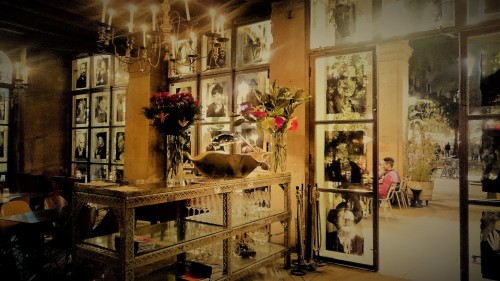
Ocana on Placa Reial
La Rita
Our second meal and another suggestion from Emily. Sadly this time not quite living up to its review, especially after Ocana which was absolutely divine. I found it strange that they went to so much trouble bringing me fresh warm gluten-free bread, only to be told that there was at most three things I could eat on the menu. Even the desserts (including the ice cream) were apparently full of gluten. My Spanish was nowhere near good enough to try to discover if the gluten was something like a wafer that they could easily leave out and I ended up somewhat frustrated. Even the choices we eventually made were underwhelming.
Horiginal
We discovered Horiginal by accident. Wandering back from a night at the opera (yep, I also got to tick that off my bucket list; Carmina Burana at the Tivoli Theatre) it was too early to go back to the apartment so we went in search of an after show drink. The bar is pretty much next door to MACBA and convenient as a lunch or evening spot. On this night we just wanted a drink and a snack having eaten dinner earlier (a rather expensive and forgettable paella hastily grabbed on the street where our apartment was) so a hearty portion of patatas bravas and a Sangria sorted us out. On our last day we returned for lunch after our MACBA visit. A section of tapas including some seriously huge prawns, patatas bravas (again) although I skipped the Sangria this time. The portions were great, the only downside was the rather frosty lunch time service
Taller de Tapas
We’d deliberately avoided eating on La Ramblas expecting it to be expensive and touristy, but on our last night as a storm raged overhead and the rain became biblical we couldn’t face a long trek anywhere. I did a quick search on the internet for the best, reasonably priced restaurants close to La Ramblas and discovered Taller de Tapas. We’d walked past it several times but hadn’t paid it any attention but this time decided to give it a go. On arrival the place was packed with cold wet tourists, but we only had to wait dripping by the door for about ten minutes before a table became available.
As it was our last night we decided to go for it. We started with a selection of tapas; Mussels with herbs, sautéed wild mushrooms, Spanish tortilla and chicken kebab with herbs and spices. All were delicious and the portions were good; they would have been too much for me, but I reckon my partner could have eaten the paella on his own. Since we were sharing everything and grazing at a leisurely pace (we weren’t in a big hurry to go back out in the rain) we ordered plenty; the tapas and the paella was filling, but left plenty of room for dessert. True to predictable form I chose Catalan creme brulee (I can’t help it, its my favourite and everything else had gluten in it) while my partner went for almond tart. All of this plus a couple of beers and Sangria and it didn’t break the bank. This was the best spontaneous find of the week!
STAY
We looked at B&B’s and hotels but then decided to go for Airbnb in order to save money on accommodation so we could do and see more while we were there. We found ourselves a reasonable budget apartment. At 40 euros the one I found seemed too cheap to be true and perhaps a bit of a risk but I wasn’t going to spend a fortune on somewhere that we were just going to be sleeping.
There are pluses and minuses to going budget. The room was clean, basic, with a private bathroom and completely adequate. It was just off La Rambla so close to everything, close to Liceu Metro station with an array of shops, bars and cafes next door. In reality we spent very little time there.
The down side? The apartment was on the fourth floor with no lift. The street was noisy at night and we seemed to be sharing with quite a few others so the ‘shared’ space (kitchen and lounge) didn’t seem so inviting. We used the kitchen for breakfast but I got the impression that a couple of the guys there were long-term room renters. I think maybe we would have cooked for ourselves or used the apartment more if we’d had it to ourselves but it was fine because we were only there for a few days.
We flew from Liverpool to Barcelona and then caught the train into the city and then the Metro to Liceu stop. On the way back we caught the airport bus (Aerobus) from Placa Catalunya which was much more convenient
Other stuff we didn’t quite get around to….. On our first night we took a walk up to Passeig de Gracia so I could get my first glimpse of Gaudi. I was impatient and couldn’t wait but as it turned out we didn’t ever make it back to go inside. La Pedrera and Casa Batllo were both lit up and I took a few pictures but that’s as far as it went. There was so much to see and its a place that draws you in so obviously I’ll just have to go back again and catch the places I missed first time around!














































































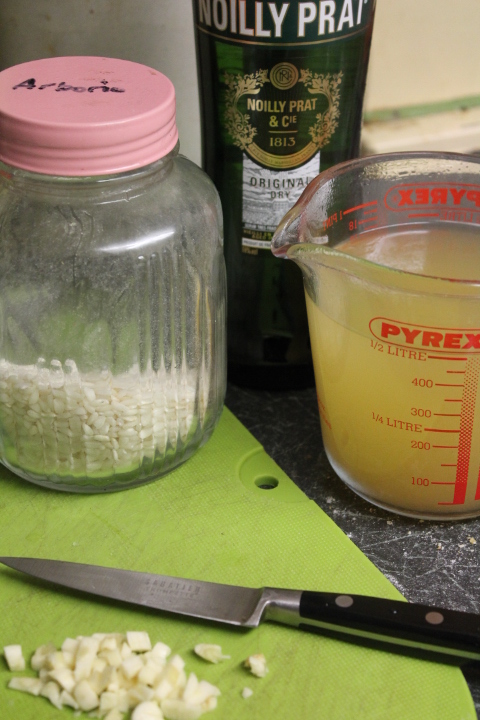





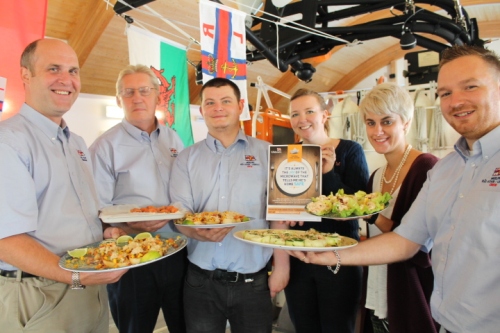
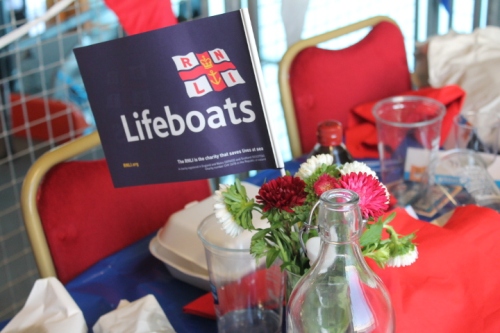




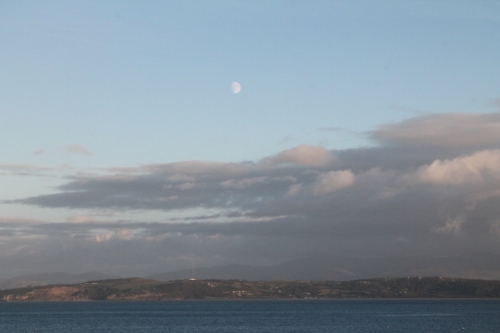

![IMG_20141227_171428[1]](https://moelfabansuppers.files.wordpress.com/2015/01/img_20141227_1714281.jpg?w=500&h=671)
![DSC_0162[1]](https://moelfabansuppers.files.wordpress.com/2015/01/dsc_01621.jpg?w=500&h=667)
![DSC_0160[1]](https://moelfabansuppers.files.wordpress.com/2015/01/dsc_01601.jpg?w=500&h=667)
![DSC_0163[1]](https://moelfabansuppers.files.wordpress.com/2015/01/dsc_01631.jpg?w=500&h=667)
![IMG_6751[1]](https://moelfabansuppers.files.wordpress.com/2014/12/img_67511.jpg?w=500&h=333)
![IMG_6744[1]](https://moelfabansuppers.files.wordpress.com/2014/12/img_67441.jpg?w=500&h=333)




